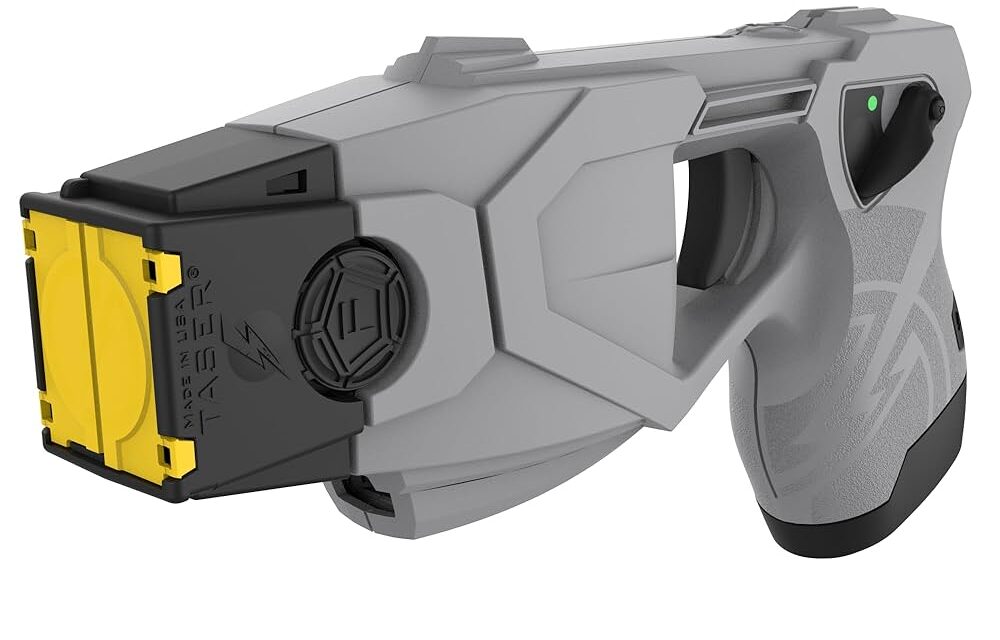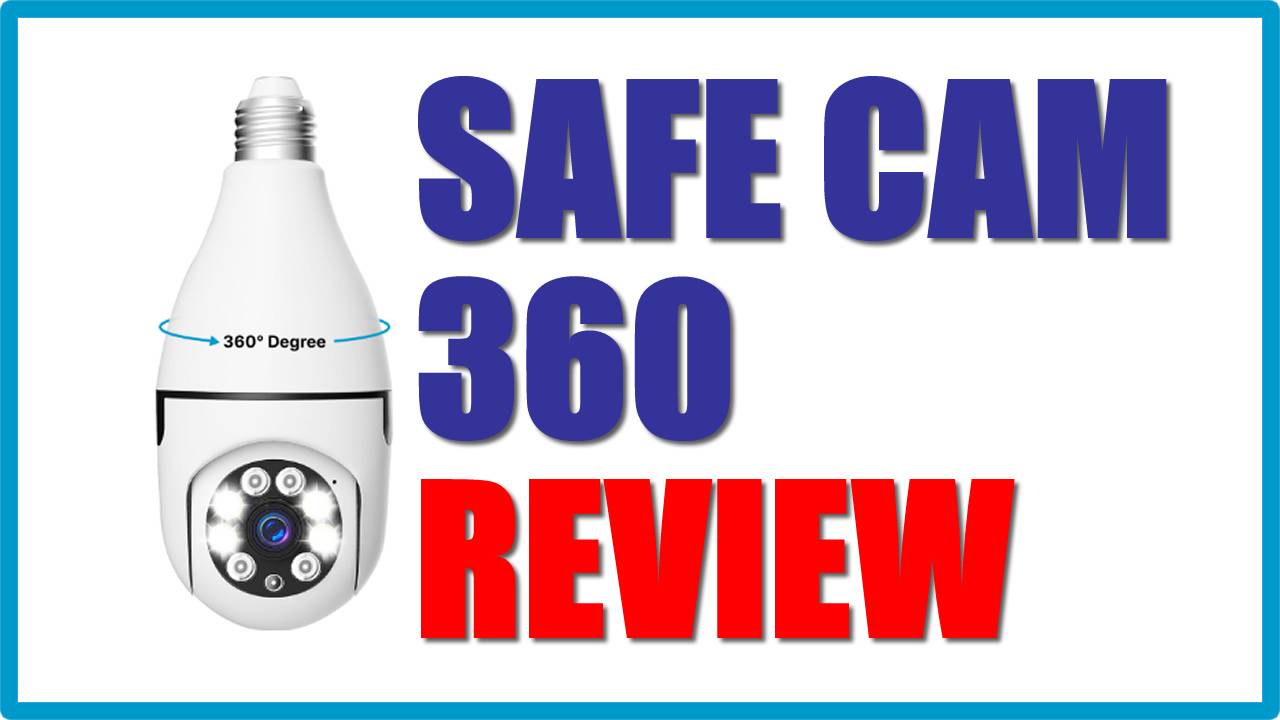Home security professionals constantly evaluate emerging technologies. Tasers represent one of the most significant advances in personal protection devices. These electronic weapons have transformed both law enforcement and civilian self-defense strategies.
Understanding taser technology requires examining voltage specifications, legal frameworks, and practical applications. Modern tasers deliver controlled electrical pulses designed to temporarily incapacitate threats. This capability makes them valuable tools for security professionals and responsible civilians.
The taser gun market continues expanding as civil rights advocates and security experts recognize their potential. Unlike traditional lethal weapons, tasers provide non-fatal options for threat neutralization. This balance between effectiveness and safety drives their widespread adoption across the United States.
Understanding Taser Gun Technology and Specifications
A taser gun typically delivers an electrical charge of 50,000 volts upon initial activation. However, the amount that actually reaches the target is significantly lower—around 1,200 volts once the probes make contact. Police taser models generally operate at voltages between 50,000 to 100,000 volts for maximum effectiveness.
The Taser X26 represents one of the most widely used police taser gun models. The X26 voltage tasers peak at 50,000 volts and this reduces dramatically when it reaches the body. The Taser X26P and newer Taser 7 models feature advanced technology with adaptive pulse systems to increase effectiveness.
Taser 10 technology represents the latest advancement in conducted energy weapons. The Taser 10 provides enhanced accuracy and extended deployment range compared to earlier models. These improvements address tactical requirements identified by law enforcement agencies worldwide.
The key difference between tasers and traditional stun guns lies in deployment method. Tasers fire projectile probes that deliver electrical pulses through thin wires, affecting the nervous system. Stun guns require direct contact and only affect localized areas by delivering a painful shock.
Axon, the primary manufacturer of police taser guns, continues developing new technologies. The company’s research focuses on improving accuracy, reducing injury risk, and enhancing officer safety during deployment situations.
How Many Volts is a Taser and What This Means
Police tasers typically operate at voltages ranging from 50,000 to 150,000 volts. The high voltage is necessary to penetrate clothing and effectively incapacitate a person temporarily. However, understanding voltage alone doesn’t explain taser effectiveness completely.
Voltage represents the electrical pressure that pushes current through resistance. The actual current delivered by tasers remains relatively low, typically between 1.9 to 3.6 milliamps. This low amperage makes tasers less lethal weapons rather than non-lethal tools.
The Taser X2 and other modern models use sophisticated pulse technology. These devices deliver electrical energy in controlled bursts designed to disrupt voluntary muscle control. The pulsing pattern prevents the body from adapting to the electrical stimulus.
Current matters more than voltage for neuromuscular incapacitation. While marketing materials emphasize high voltage numbers, the amperage determines actual effectiveness. Professional security personnel should focus on current specifications when evaluating taser options.
Understanding electrical principles helps security professionals make informed decisions. Higher voltage enables current flow through clothing and skin resistance. However, excessive current could cause serious injury or death, requiring careful calibration.
Legal Framework for Taser Ownership Across States
Tasers are legal for consumer use and ownership in 49 states, with Rhode Island being the only state where taser purchase, possession, and use remain illegal. Recent legislative changes have expanded taser access in previously restrictive states like New York and New Jersey.
California, Florida, and Texas allow taser ownership without permits for adults over 18. These states represent the majority approach to taser regulation in the United States. However, restrictions apply in schools, government buildings, and airports across most jurisdictions.
Background check requirements exist in Illinois, Maryland, Massachusetts, and Minnesota. These states treat tasers similarly to firearms for purchase purposes. The background check process helps ensure that convicted felons cannot legally obtain these devices.
Concealed carry permits are required in Delaware, Kansas, Mississippi, North Carolina, and Wisconsin for concealed taser carry. However, open carry remains legal in most of these jurisdictions without additional permits or licensing requirements.
Local ordinances may impose additional restrictions beyond state laws. Cities and counties can regulate taser possession in specific locations like schools, bars, or public events. Security professionals must research local regulations before recommending taser purchases.
Taser for Women and Personal Protection Applications
Women represent a growing segment of the civilian taser market. Compact models like the Taser Pulse offer effective protection in easily concealed packages. These devices provide confidence and security for women concerned about personal safety.
The lipstick taser and other disguised models appeal to women seeking discrete protection options. However, security professionals should emphasize that training and proper deployment matter more than device appearance. Regular practice ensures effective use during high-stress situations.
Taser flashlight combinations serve dual purposes for personal protection. The Vipertek taser and similar models integrate illumination with self-defense capabilities. These tools prove especially valuable for women who frequently walk alone after dark.
Taser ring devices represent emerging technology in personal protection. These compact systems provide immediate access to electrical defense capabilities. However, their limited range and power output may reduce effectiveness compared to full-sized units.
Women considering taser ownership should evaluate their specific security needs. Factors include living environment, daily routines, and physical capabilities. Professional security consultations help determine the most appropriate personal protection strategies.
Professional Applications: Police and Security Use
Law enforcement agencies worldwide have adopted tasers as standard equipment. Over 15,000 law enforcement and military agencies around the world used tasers as part of their use of force continuum. This widespread adoption reflects their effectiveness in reducing officer and suspect injuries.
Police taser training emphasizes proper deployment techniques and safety protocols. Officers learn to target large muscle groups while avoiding sensitive areas like the head and chest. This training reduces the risk of serious injury during taser deployment.
The Taser X26P represents the current standard for many police departments. This model offers improved ergonomics and enhanced safety features compared to earlier designs. The device includes data logging capabilities for accountability and training purposes.
Security professionals in private settings increasingly utilize tasers for threat management. Corporate security teams, event security, and personal protection specialists rely on these tools for non-lethal threat neutralization. Proper training and certification ensure professional deployment.
Use of force policies govern taser deployment in professional settings. These guidelines establish clear criteria for when electrical weapons are appropriate. Security professionals must understand legal requirements and departmental policies before carrying tasers.
Comparing Stun Gun vs Taser Effectiveness
The stun gun vs taser debate centers on deployment range and effectiveness. Tasers can engage targets from 15 to 25 feet, while stun guns require direct physical contact. This distance advantage makes tasers more versatile for most security applications.
Stun guns deliver localized pain without the neuromuscular incapacitation provided by tasers. The electrical shock from stun guns typically causes pain compliance rather than temporary paralysis. This difference affects their reliability for threat neutralization.
Vipertek taser models and similar consumer devices bridge the gap between traditional stun guns and professional tasers. These units offer projectile capability at lower costs than professional-grade equipment. However, their effectiveness may not match police-grade systems.
Training requirements differ significantly between stun guns and tasers. Stun guns primarily require close-contact techniques, while tasers demand marksmanship skills and range estimation. Security professionals should consider these training implications when selecting devices.
Pepper spray often provides a viable alternative to both tasers and stun guns. The spray offers longer range than stun guns and requires less precision than tasers. Multi-option strategies incorporating various tools provide comprehensive personal protection approaches.
Safety Considerations and Risk Assessment
Taser deployment carries inherent risks that security professionals must understand. While designed as less lethal weapons, tasers can cause serious injury or death under certain circumstances. Heart problems, falls, and secondary injuries represent primary risk factors.
Proper target selection minimizes injury risk during taser deployment. Security professionals should avoid targeting the head, neck, and chest areas when possible. Large muscle groups in the legs and back provide effective incapacitation with reduced injury potential.
Medical conditions may increase taser-related injury risks. Individuals with pacemakers, heart conditions, or neurological disorders face elevated dangers from electrical shock. Security professionals should consider these factors when developing use policies.
Environmental hazards affect taser safety during deployment. Wet conditions can increase electrical conductivity, while flammable atmospheres create fire risks. Professional training covers these environmental considerations and appropriate deployment modifications.
Post-deployment medical attention may be necessary after taser use. Even successful deployments can cause minor injuries requiring professional medical evaluation. Security protocols should include procedures for obtaining medical assistance when needed.
Making Your Security Decision
Cost considerations influence taser selection for security applications. Professional-grade models like the Taser 7 and Taser X2 cost significantly more than consumer versions. However, the enhanced reliability and features justify the investment for professional use.
Training programs enhance taser effectiveness and safety. Axon and other manufacturers offer comprehensive certification courses for security professionals. These programs cover legal aspects, deployment techniques, and maintenance procedures for optimal performance.
Maintenance requirements ensure continued taser reliability. Battery management, cartridge replacement, and periodic testing maintain device readiness. Security professionals should establish regular maintenance schedules to prevent equipment failures.
Storage and security protocols protect taser devices from unauthorized access. Professional security operations require secure storage systems and access controls. These measures prevent accidental discharge and ensure devices remain available when needed.
Integration with existing security systems maximizes taser effectiveness. Combining electrical weapons with surveillance, communications, and backup response creates comprehensive protection strategies. Professional security consultants help develop integrated approaches for specific applications.
Frequently Asked Questions About Tasers
How many volts is a taser? Most tasers operate between 50,000 to 100,000 volts initially, but this drops to approximately 1,200 volts when delivered to the target. Police tasers typically use the higher end of this range for maximum effectiveness through clothing and at distance.
Can a taser kill you? While tasers are designed as less-lethal weapons, they can potentially cause death in rare circumstances. Risk factors include heart conditions, falls, and secondary injuries. At least 49 people died in 2018 after being shocked by police with tasers, though many involved other contributing factors.
What does a taser feel like? A taser causes intense muscle contractions and temporary paralysis. Recipients describe the sensation as extremely painful electrical pulses that prevent voluntary movement. The effects typically last for the duration of the electrical cycle, usually 5 seconds.
How does a taser work? Tasers fire two probes connected by thin wires that deliver electrical pulses at 19 times per second. These pulses disrupt the nervous system’s ability to control voluntary muscle movement, causing temporary incapacitation through neuromuscular interference.
How many volts is a police taser? Police tasers typically deliver 50,000 to 100,000 volts initially. The Taser X26 and X26P models commonly used by law enforcement operate at 50,000 volts peak output, with sustained voltage around 1,200 volts to the target.
Where can I buy a taser? Tasers can be purchased from authorized dealers in states where legal. Online retailers, sporting goods stores, and security equipment suppliers offer civilian models. Always verify local laws and age requirements before purchasing.
Where to buy a taser gun? Taser guns are available through licensed firearms dealers in some states, online retailers, and specialty security stores. Axon offers civilian models through their official website and authorized distributors nationwide.
Can you bring a taser on a plane? No, tasers are prohibited in carry-on and checked luggage on commercial aircraft. The Transportation Security Administration classifies tasers as prohibited weapons for air travel. Law enforcement officers may have exceptions with proper authorization.
How much does a taser cost? Consumer taser prices range from $300 to $500 for basic models like the Taser Pulse. Professional-grade units like the Taser 7 cost $1,500 or more. Replacement cartridges add $20-30 per cartridge to operating costs.
Are tasers legal in California? Yes, tasers are legal in California for adults 18 and older without a permit. However, they’re prohibited in schools, government buildings, and airports. Convicted felons and those with assault convictions cannot legally possess tasers.
Are tasers legal in New Jersey? Yes, tasers became legal in New Jersey in 2017 after the state reversed its previous ban. Adults 18 and older can purchase and carry tasers for self-defense, though restrictions apply in schools and government buildings.
How do tasers work? Tasers work by firing two electrode probes that penetrate clothing and skin. These probes deliver electrical pulses that interfere with the nervous system’s control of voluntary muscles, causing temporary paralysis and incapacitation lasting 5-30 seconds.
Are tasers legal? Tasers are legal in 49 states for civilian ownership, with varying restrictions. Rhode Island prohibits civilian possession. Most states require users to be 18 or older, and some require background checks or permits for concealed carry.





